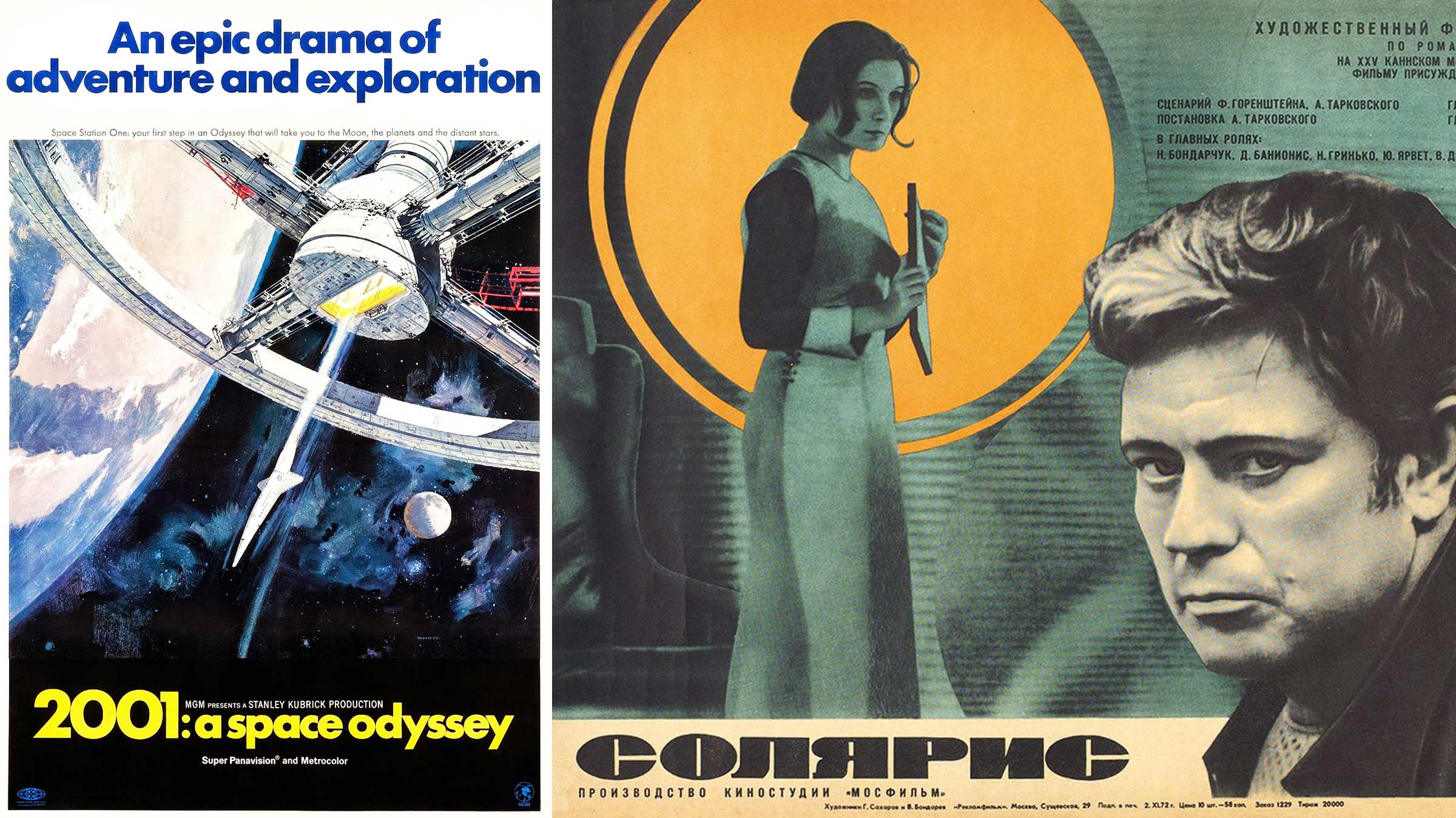Beam me up Sputnik!—5 Soviet counterparts to your favorite space films
The Apollo 11 landing effectively concluded the Cold War-era race to the moon between the Soviet Union and the United States. But while the U.S. space program began to fall apart and the U.S.S.R. turned its attention to space stations and orbital flight, the countries’ cinematic rivalry intensified. Throughout the Soviet era, both sides of the Iron Curtain enjoyed a surge of sci-fi films. Near-propaganda, teen-dream astronauts, and cerebral art films emerged, capitalizing on the fears and optimism posed by the advent of space travel.
Document takes a look back at a few of the Soviet era films that gave Kubrick and Coppolla a run for their money and their American counterparts, including the cerebral Soviet substitute to 2001: A Space Odyssey and the campy dark comedy to unseat Spaceballs.
Solyaris [Solaris] (1972): the Soviet answer to 2001: A Space Odyssey
Andrei Tarkovsky’s Solyaris follows psychologist Kris Kelvin, sent from Earth to a decrepit space station orbiting the planet Solyaris, where he investigates a series of emotional breakdowns and suicides. There, Kelvin discovers a form of alien life preying upon crew members’ memories, ultimately falling vulnerable to the same mysterious psychosis himself. As Kelvin’s involvement with the aliens deepens, the film explores the limits of love, the ethical responsibility of science, and who is ‘human.’ Though lesser known to American audiences than Kubrick’s Space Odyssey, Solyaris premiered to critical praise and near instant popular success within the Soviet Union. At the 1972 Cannes Film Festival, Solyaris walked away with the Grand Prix de Jury and a nomination for the Palme d’Or. With its eerie, poignant conclusion and relatively sparse special effects—which aged far better than its flashy American or Soviet contemporaries—Solyaris safely secured a place in the ranks of sci-fi classics.
Moskva-Kassiopeya [Moscow-Cassiopeia] (1973) and Otroki vo vselennoy [Teens in the Universe] (1974): the predecessor to Explorers (1985)
Moscow-Cassiopeia and its sequel Otroki vo vselennoy might suit a niche craving for Star Trek-era space visuals and teenage genius à la Explorers. In both, a crew of teenage Russians is assembled to man a long-term space mission to determine the cause of a distress signal from Alpha: a planet in a faraway solar system called Cassiopeia. The space flight engineers assume the students will be well into adulthood on arrival, but when one of their friends stows away on the flight, the space ship bounces into light speed and the crew arrives 27 years ahead of schedule. While the films may lack the nostalgic twinge of seeing pre-pubescent Ethan Hawke and River Phoenix scampering around the galaxy, stay anyway for an inexplicable dance, maybe torture, sequence—it’s near impossible to tell the difference.
Nebo Zovyot [The Sky Calls] (1959): a patriotic tale of Soviet innovation later Americanized by Francis Ford Coppola in 1962
With patriotic flourishes, Nebo Zoyot follows the race between Soviet and American space crews to be the first men on Mars, as well as the ensuing rescues, fuel shortages, and crash landings. While the original Russian version of the film was never released in the United States, a young Francis Ford Coppola was tapped to help direct an American edit of the film, titled Battle Beyond the Sun, in 1962; he dubbed out all anti-American language and blurred over all Cyrillic characters in sight. However, Coppola made a few notable additions of his own, including two monsters rumored to be modeled after male and female genitalia.
Tayna tretyey planety [Mystery of the Third Planet] (1981): the animated cult classic in league with The Jetsons (1962-1963) and Rick and Morty (2013-present)
Somewhere between The Jetsons and Cyberchase (with a dash of Rick and Morty), Tayna tretyey planety sees Professor Seleznyov and his daughter Alice set off on a search on a search for extraterrestrial additions to the Moscow Zoo. With help from spaceship captain Captain Zelyonyy, Alice and her father discover flower “mirrors” which remember everything that has occurred around them and chattering birds which only speak the truth. They navigate a colorful world of spies, bad guys, and new friends before arriving predictably but enjoyably back home in the animated cult classic.
Kin Dza-Dza! (1986): a satirical tragi-comedy for Spaceballs (1987) fans and sci-fi skeptics
After encountering an alien outside of a store in Moscow, a Georgian student and a construction foreman are transported to the resource-depleted planet Pluke. They quickly encounter the gruff, telepathic natives, who quickly teach them the ropes—always in exchange for matches which function as currency. Intentionally or not, Kin Dza-Dza! has a couple callbacks to American ‘80s classics: Mad Max’s patched-up ships made of scrap metal, the sparse linen uniforms of Star Wars. But Kin Dza-Dza! is not quite in the camp of parody film like Spaceballs. Its dark comedy is much more “earthly,” playing upon the economic instability and politics of the contemporary Soviet Union, where fuel shortages were constant. The film was nearly censored because of the similarity between the Plukian swear word “kyu” and the name of the Communist Party General Secretary, K.U. Chernenko.







